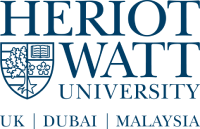Dr Y Altmann, Prof S McLaughlin, Prof G Buller
Applications accepted all year round
About the Project
The main objectives of this computational PhD project are to develop new and ground-breaking methods for fast and robust 3D imaging and sensing. This ambitious project will concentrate on real-time solutions for analysis of long-range 3D scenes (object detection and 3D reconstruction) in the presence of scattering media and atmospheric turbulence.
Within the School of Engineering at Heriot-Watt University (HWU), the signal/image processing and optics research groups (http://www.single-photon.com) are working together to push the frontiers of 3D imaging. In particular, the high sensitivity of photodetectors allows for the use of low-power laser sources (ranging from the visible through infrared frequencies), a key element for defence applications and resource management in embedded systems. Similarly, gated-cameras, which are less expensive and potentially allowing faster acquisitions can also be used.
Among the wide variety of 3D imaging applications, long-range imaging in the photon-limited regime is of prime interest for Leonardo. Long distances (several kilometres) exacerbate the nuisance effects of light propagating through scattering media (e.g., fog) and atmospheric turbulence (e.g., wind) which in turn produce signal distortion and additional sources of uncertainty that require new algorithms to be developed. While the most recent reconstruction methods provide very good reconstructions under mild turbulence and scattering, they still require prohibitive computing times.
Preliminary results (publications under review) have demonstrated the benefits of massively parallelisable algorithms allowing unprecedented frame rates while ensuring state-of-the-art estimation performance and this PhD project will continue in this direction of research. While scalable/parallelisable algorithmic structures will be adopted for fast information extraction, they will be embedded within a statistical/Bayesian framework, allowing rigorous uncertainty management tools. This is particularly relevant to account for the uncertainty and variability of data acquired in the presence of scattering media (fog/aerosols) and atmospheric turbulence.
The PhD student will be primarily based on the Edinburgh campus of HWU and will join the ISSS institute and the research groups of Dr Y. Altmann and Prof. S. McLaughlin. This project will be conducted in collaboration with the HWU IPAQS institute (Prof. G. Buller) and Leonardo.
Requirements for this project:
- Excellent background in statistics, Bayesian inference and computational imaging and data science
- Excellent programming skills (Matlab, C++), parallel programming desired
- Experience with optical physics desired
Funding Notes
The PhD project, funded in part by Leonardo (https://www.uk.leonardocompany.com) and CENSIS (https://censis.org.uk) is available for 3.5 years for UK or EU nationals. This funding includes stipends of ~£14.5k per year and full tuition fees covered for 3.5 years. To apply, please send your CV, academic transcripts and a cover letter explaining your motivation/interest in this project, to Dr Yoann Altmann ([Email Address Removed])
References
Y. Altmann, S. McLaughlin, M. J. Padgett, V. K Goyal, A. O. Hero, D. Faccio, "Quantum-inspired computational imaging", Science 361, 660, 2018.
Y. Altmann, S. McLaughlin, "Range Estimation from Single-Photon Lidar Data Using a Stochastic EM Approach", Proc. European Signal Processing Conf. (EUSIPCO), Rome, Italy, Sept. 2018.
Y. Altmann, X. Ren, A. McCarthy, G. S. Buller, S. McLaughlin, "Lidar waveform based analysis of depth images constructed using sparse single photon data", IEEE Trans. Image Processing, vol. 25, no. 5, May 2016.

 Continue with Facebook
Continue with Facebook

